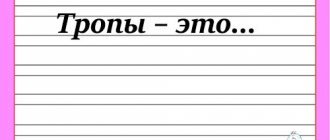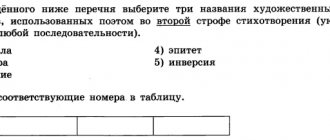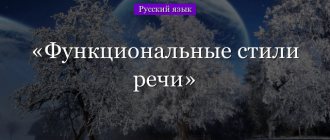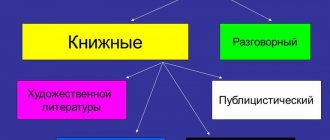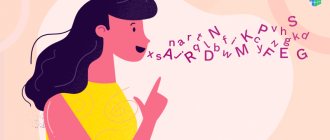The speaker and listener may not even be aware of the role of tropes in the Russian language, but actively use artistic means and perceive their dual meaning.
You don’t have to be a writer to understand the message of the phrase “pig in a poke.” But the simple man in the street will not always answer the question of what it is - “a pig in a poke”.
Defining Tropes
Tropes are the main stylistic figure designed to enrich the expressiveness of language, to embody a game with the reader through figurative thinking, enhanced expression and figurative meanings.
These include comparisons, exaggerations, epithets and other lesser-known expressions such as alliteration. It is often expressed in the form of an adjective or participle, answering the question “which?” But it can also act as a noun: spring beauty.
A narration, decorated with various techniques, arouses much more interest than a dry listing of facts, actions, names of heroes, and meager descriptions of their character.
And even in the most primitive conversations, willy-nilly, you can detect people’s desire to embellish and compare.
This is found everywhere along with syntactic and lexical means:
- In any kind of text, be it free stories, scientific articles or poems.
- In living human speech (the most common phraseological units).
- In folk art. It is mainly built on inversion, grotesque, set phrases and a colossal number of epithets.
There are quite a lot of artistic techniques, sometimes it is difficult to distinguish them from each other even for experienced literary critics. But general stylistic devices are not that complicated.
Unified State Exam Russian language. Express preparation. Task No. 26. Language means of expression.
Types of words by meaningSynonyms are words of one part of speech that differ in shades of meaning and stylistic use in speech (magnificent, excellent, amazing, luxurious, excellent, wonderful, cool, super).
Contextual synonyms are words that are synonyms only in a given context.
For example: by nature she was a kind, gentle woman.
Synonyms for these words outside the text:
Kind - warm-hearted, sincere, compassionate, humane, etc.
Soft - plump, plastic, elastic, fluffy.
Antonyms are words that have opposite meanings (reject - approve, original - fake, callous - responsive).
Contextual antonyms are words that are antonyms only in a given context. The contrast of such words is a purely individual author’s decision.
For example: one day is a whole life, wolves are sheep, a poet is a poet.
Homonyms are words that are spelled the same, but have completely different meanings (a maiden’s braid and a scythe as an agricultural tool).
Paronyms are words that are similar in spelling and sound, but have different meanings (great - majestic, spectacular - effective).
Types of words by area of use
Common words are words whose meaning is known to all people, all speakers of a given language (sky, school, blue, walk, beautiful, etc.)
Dialectisms - these words are used by residents of a certain area ("sadnova" - that is, constantly, used in the outbacks of the Volga region).
Professionalisms (or special vocabulary) - these words are used by people of a certain profession (syringe, scalpel - by doctors; root, morphology, syntax - by Russian language teachers).
Terms are the names of certain concepts that are used in a particular field of knowledge (for example: function, democracy)
Jargons are words and expressions that are used in social groups during informal communication (for example: glitch, hack - computer jargon, that is, slang; ksiva, malyava-thief jargon; teacher, troyak, homework - school;
Types of words by origin
Outdated vocabulary (archaisms ) are outdated words that came out of constant speech, as over time they were replaced by other words (eyes, eyes, cheeks, cheeks).
Historicisms are obsolete words that have fallen out of use due to the disappearance of the phenomena that they denoted. These words can be used to describe a historical era (chain mail, boots).
Neologisms are new words that have recently appeared in the language and have not lost their novelty. Over time, these words become part of the group of commonly used words. So, quite recently, neologisms were the words: computer, tablet, mobile phone, smartphone, but today they are already moving into the category of commonly used words.
Original Russian words - words that arose in ancient times among the Eastern Slavs, Old Church Slavonicisms (sweet, enemy, know)
Borrowed words (foreign words) - by origin, these words are borrowed from other languages. This often happens during a period of economic, cultural communication, interconnections between countries and peoples. (For example, hyperbole is a word of Greek origin, modernization is of French origin).
Barbarisms are foreign words that have entered Russian speech, but are always perceived as foreign. They are often used to describe foreign life, etiquette, etc. (For example: monsieur, boyfriend, businesswoman).
Types of words by area of use
Stylistically neutral vocabulary is words that are not attached to a specific style of speech (compare: fragrant - fragrant, evidence - arguments)
Book vocabulary - used in book styles: scientific literature, official business, journalistic style (for example: declarative, count, conjuncture)
Colloquial vocabulary - words used in oral speech, often in everyday communication
(braggart, reader, bully.)
Colloquial words are words of colloquial vocabulary, but with their own characteristics:
-violating language norms (traNvay instead of tramvay, kvartal instead of kvartal)
- violating moral standards, rude words (badass, drag)
- vulgar, abusive language that insults a person.
Emotionally charged words (expressive vocabulary, evaluative vocabulary) are words that express attitudes towards others, phenomena, actions, positive and negative (for example: friend, power, gate, guard).
Phraseologisms are stable phrases that are equal in meaning to one word.
From the point of view of stylistic coloring, phraseological units are:
- colloquial: run headlong - quickly, work carelessly - be lazy
— book: apple of discord, finest hour
- colloquial: screw your brains, stupid head.
Main types
| COMPARISON | A phrase where several objects, situations, creatures, and so on are compared (compared). Comparative words are a mandatory element: “as”, “as if”, “as if”, “exactly” (meaning “as if”). “All like a rumpled bed”; "Crying like a baby." |
| EPITHET | A colorful evaluative definition with additional characteristics. "Bottomless Sky"; "Greedy Flame" |
| HYPERBOLA | Deliberate exaggeration in the description of phenomena. “A thousand suns were reflected on the waves”; "A sea of tasks." |
| LITOTES | The backfire of hyperbole: deliberate understatement. "Tom Thumb"; “I am a grain of sand in this world.” |
| METAPHOR | Transferring the characteristics of one object to another based on their similarity. This is a hidden comparison that does not use the words “as”, “as if”, and so on. “Walks like a bear”; "Forest Tent" |
| PERSONALIZATION | Intentional transfer of properties of living things to non-living things. "The clock is striking"; "It is raining". |
| IRONY | Allegory with slight mockery in order to create and convey a satirical image. “Where are you going, smart one, head? - the fox asked the donkey.” |
| INVERSION | Violation of the standard ordering of words, enhancing the expression of speech patterns. Most characteristic of folklore. “The stars thin at dawn, and the color turns pink.” |
| GROTESQUE | Portraying a subject in a comic light through contrasts and exaggeration. Most often used in folklore and character creation. Example: Koschey the Immortal. |
| OXYMORON | A type of antithesis (contrast). A paradoxical phrase with contradictory meaning. "Living Dead"; "Fire of Ice" |
All these are ways of playing with consciousness, embodying the images with which a person is accustomed to perceiving the environment, creating a special atmosphere. Images are a generalized distortion of reality , passed through the author’s inner world.
Poetic stylistic figures
The list doesn't end with just ten examples.
All of them can be used in poetry with the same success as in prose, but some phrases are suitable specifically for poetics.
In addition to the main types of artistic means in literature, there are poetic tropes and figures of speech.
Table with examples:
| ALLITERATION | Repeating identical consonants in order to give the verse a special intonation. "Evening. Seaside. Sighs of the wind. The majestic cry of the waves. A storm is coming. A black boat, alien to enchantment, hits the shore...” (Balmont). |
| ASSONANCE | Repeating the same vowels in a stanza or line. “Oh, the infinitely beautiful sun... The sunset is equally beautiful!” |
| ANAPHORA | Repeat the initial word, one line or phrase. “You are poor, you are abundant, you are downtrodden, you are all-powerful, Mother Rus'!” (Nekrasov). |
| PARALLELISM | The same or similar arrangement of word forms in order to create a single poetic image. “You, Admiral, will leave the sea. You, admiral, will die of grief.” |
| RHYME | Rhyme is also considered a full-fledged trope, although it is familiar even to children. The consonance of the last stressed syllable in a line is called rhyme. It can be cross, as in the example (the first and third lines, the second and the fourth alternate), or parallel (the first rhymes with the second, the third with the fourth). “The sun is rolling into the sunset, soon something new will be born, the waves will reflect the glare, the world will be illuminated with rays.” |
What are means of artistic expression?
The term “paths” comes from the Greek word tropos, which translated into Russian means “turn of speech.” They are used to give figurative speech; with their help, poetic and prose works become incredibly expressive. Tropes in literature, examples of which can be found in almost any poem or story, constitute a separate layer in modern philological science. Depending on the situation of use, they are divided into lexical means, rhetorical and syntactic figures. Tropes are widespread not only in fiction, but also in oratory, and even everyday speech.
Application of phraseological units
Phraseologisms deserve special attention - apt set expressions characteristic of one specific language.
In our case - Russian. Along with other linguistic units, they form an important lexical part in sentences, are independent and have their own indirect meanings.
They consist of two or more words that form a uniform semantic structure.
Relevance depends on the context or life situation. There is an expressive commentary for almost any event, behavior or character.
For example:
- Play blind man's buff - to hide something, to deceive.
- Hands folded - doing nothing.
- The cat cried - very little.
- You can’t ride a goat - about an unapproachable person who doesn’t know fun.
It can be difficult to understand the essence of a veiled phrase ; besides, there have been so many persistent constructions historically that it is impossible to remember them all.
Entire volumes of dictionaries with interpretation and examples of use are devoted to phraseological units. This is not only a reflection of the rich culture of the people, but also a treasure trove of research for linguists and simply interested people.
